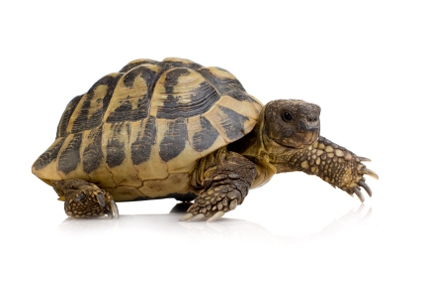
How to Care for a Turtle. Proper temperature, water quality and feeding are important aspects of maintaining the health of semi aquatic turtles and aquatic turtles (which are called terrapins). Since this is not an animal that requires a lot of exercise and constant attention it's a good pet for those who live busy lives but still want something living in their house when they come home from work.

Set up two-thirds of your turtle's aquarium for swimming and one-third for basking, using a full-spectrum ultraviolet light source. Basking is critical for drying and preventing shell problems. And since turtles can't store vitamin D 3, they must be exposed to UVB light for absorption.
Keep the temperature at 77 to 95 degrees F for aquatic and semi aquatic species. Use an aquarium heater when needed; turtles and terrapins become sluggish and stop eating in low temperatures.
Keep the water clean to prevent health problems. Use an aquarium filtration system to maintain optimal water quality.
Prevent your turtle's environment from becoming soiled by either netting or siphoning off all fecal matter as soon as possible. Fecal buildup can cause health problems.
Clean the entire aquarium (including the filtration system) at least once a month. Clean ponds or large enclosures where the animal spends time at least every three to six months.
Offer a complete commercial diet made specifically for turtles and terrapins. Check with experts for exact dietary requirements and amounts for your species.
Supplement the diet with appropriate snacks: Earthworms, crustaceans, small fish, mouse pups, algae, leafy green vegetation and fruit are examples of suitable foods for terrapins. Semi aquatic species tend to be herbivorous - they tend to eat plants only.
Feed your pet two to three times a week in a small holding tank that is separate from its normal enclosure; uneaten food can attract disease - causing microorganisms.
Rinse off your turtle after a feeding with slightly warm water before returning him to his enclosure.
Find a veterinarian who specializes in reptiles, amphibians and other exotic pets to provide care for your turtle.
Copyright © 2005-2016 Pet Information All Rights Reserved
Contact us: www162date@outlook.com